Quirky bits – marginally related to the conference
At the tail end of many of our conference emails we added a bit of quirky information, sometimes about Melbourne, sometimes about words or numbers.
Here they are together!
Pangrams
A pangram is a sentence containing all letters of the alphabet.
‘The quick brown dog jumps over the lazy dog’ is probably one of the better known ones. Typically they were used for budding typists or calligraphers. Nowadays they are used to display font choices.
Here’s some more
- Sphinx of black quartz, judge my vow.
- How vexingly quick daft zebras jump!
- Pack my box with five dozen liquor jugs.
Inevitably a web search will produce many more and AI might even create them!
Subtraction methods - Equal addition and Decomposition
This quirky bit was inspired by the recent discovery of some notes made fifty years ago by a long retired secondary technical school maths teacher. The notes are on faded purple and pink roneod sheets. If you are of a certain age you’ll be able to smell the methylated spirits.
Back in the 1970s, working with a small group of teenage ‘remedial math students’ it became evident they did subtraction ‘different’ to the untrained maths teacher. He thought they did it ‘wrong’. Such was the naiety and ignroance of the teacher.
When the teacher actually dug into it, he discovered they had been taught different methods at feeder primary schools, sometimes different methods within the same school. Often, apparently, not understanding one method before being pushed to the next.
Here’s the two methods recreated from the roneod notes.Now they make youtube videos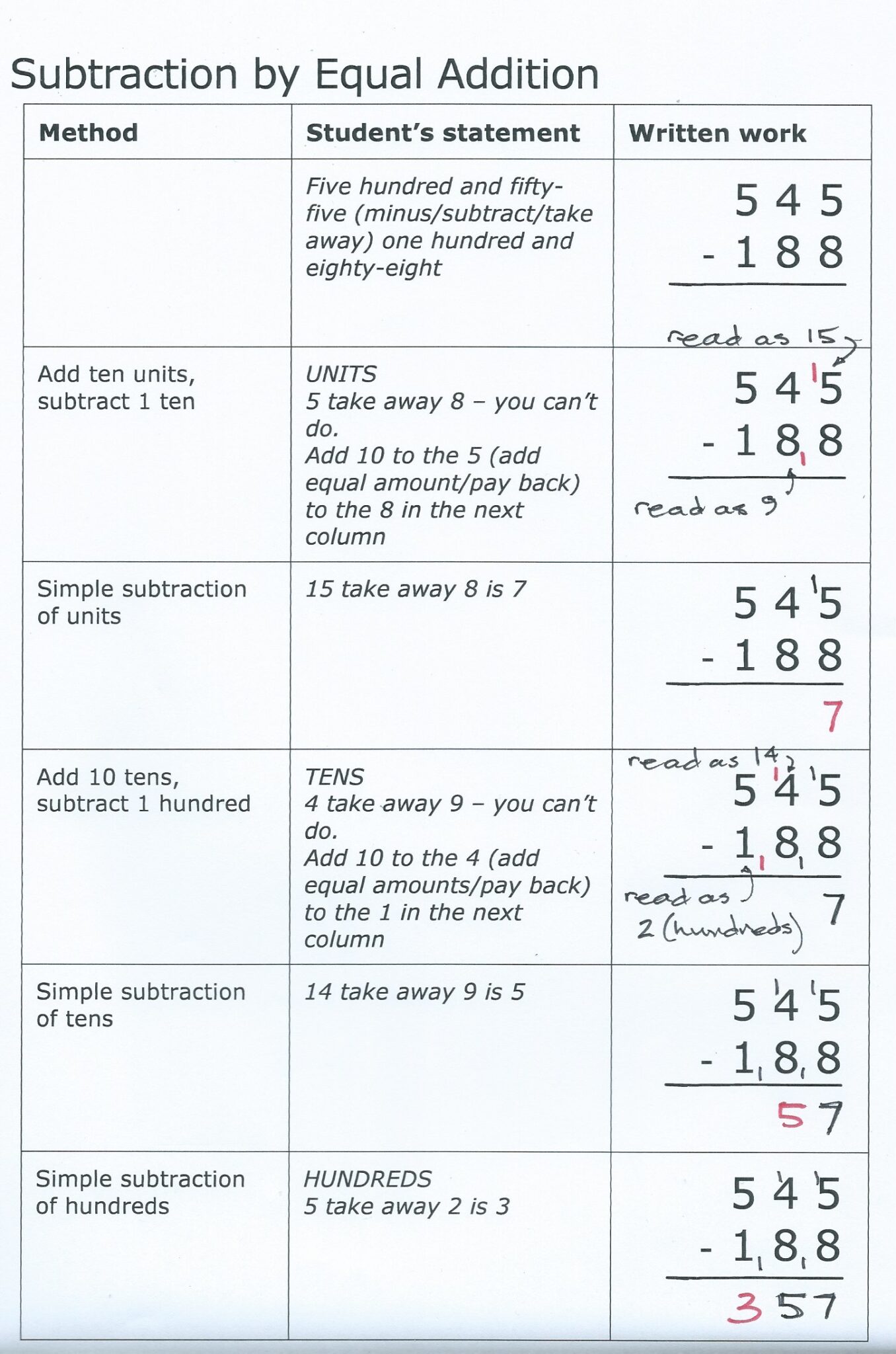
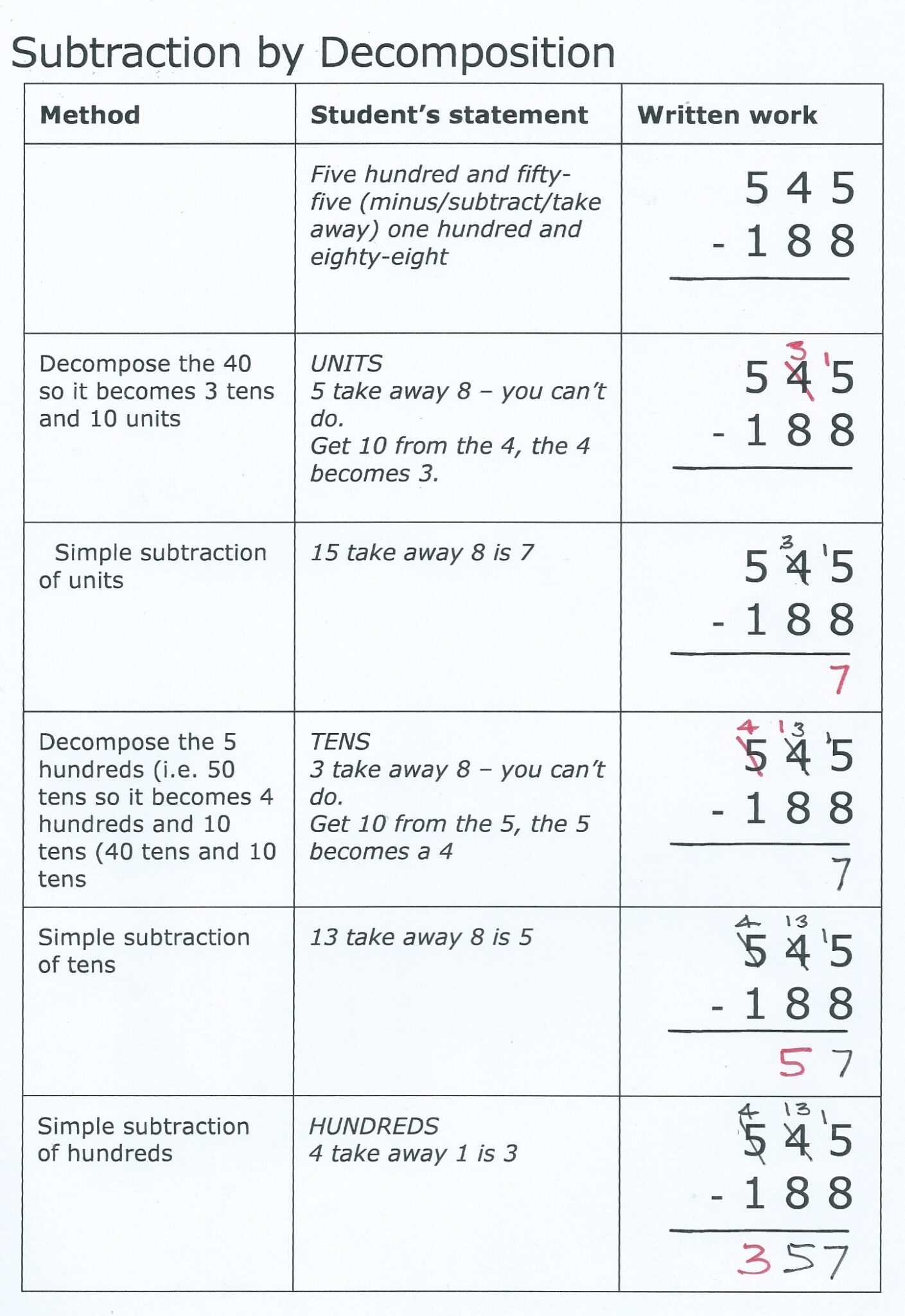
Before calculators we had ... slide rules and log books
Try this without a calculator
122.7 x 9.36
Now you could do it by ‘long multiplication’ which requires mental arithmetic and careful processing. However logarithms were an alternative, particularly as numbers got larger and operations (division, powers, square roots) became more complex.
Logarithms (logs)
Log books came in various levels. Four figure log tables were the most common in secondary schools. Senior college students probably went to five figures whereas surveyors used seven figure tables.
Critically, using logarithms relied on people being able to add and subtract logarithms accurately and also carefully read tables. Poor basic maths led to errors and frustration – for the student and the teacher.
An extract from a four figure log book. The log of 2 to the base 10 is .3010.
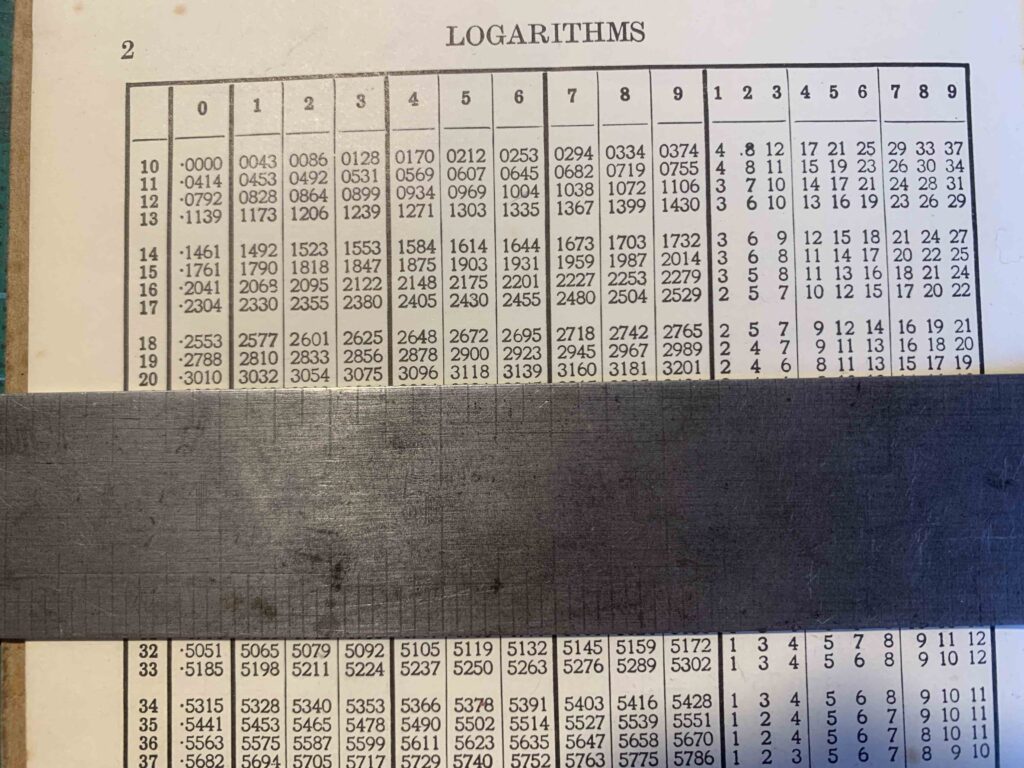
An extract from seven figure log book. The log of 2 to the base 10 is .3010300.
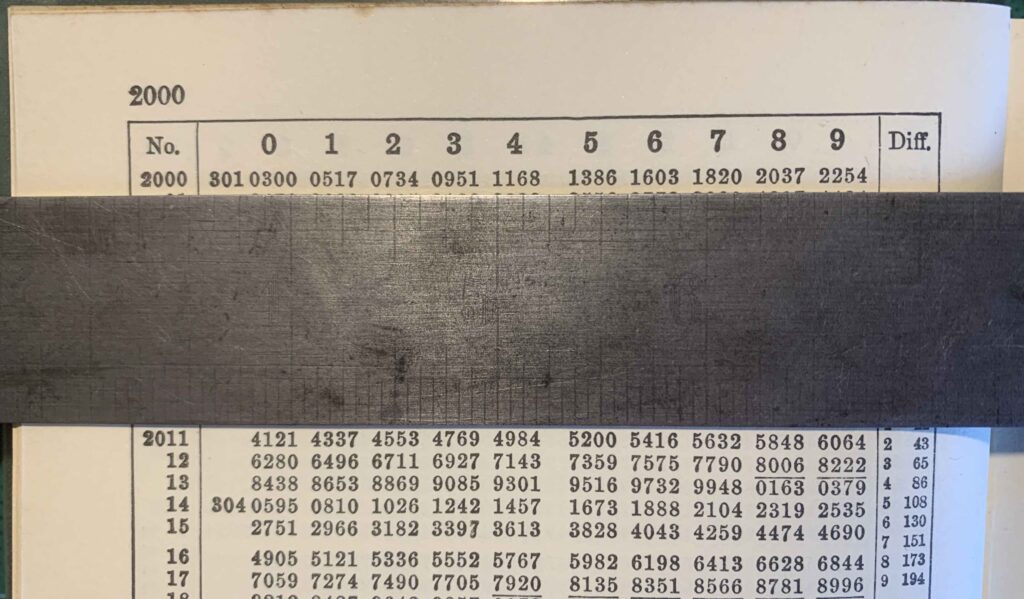
Slide rules
Slide rules were a useful alternative to log books but were not as precise. However we went to the moon in the age of slide rules. See this pic of Buzz Aldrin with his slide rule on hand.
Log books and slide rules disappeared with the advent of pocket calculators and even they have faded into the mists of time with smart phones and the internet.
This slide rule is showing 12 x 4 which is the ‘same’ as 1200 x 40. The operator need to keep a sense of proportion about them! (Pun intentional).

VALBEC's free numeracy resources
 Building Strength with Numeracy
Building Strength with Numeracy
This is a free resource which you can downaload in PDF format and use immediately, courtesy of VALBEC.
The topics are
1. The Resource
2. Getting Started
3. Exploring Numbers
4. In the Head Calculations
5. Fractions
6. Percentages
7. Decimals
8. Measurement
Gross (mis)calculations
Grocer
Do we buy anything by the gross (144 or a dozen dozen) from the grocer?
Eggs
In a metric world why do we still buy eggs by the dozen?
And the baker’s dozen
Thirteen to avoid customer complaints.
150 metric years
One hundred and fifty years ago 17 nations committed to ‘the international unification and improvement of the metric system’ Listen to the ABC story.
Cooking faux pas
In Australia, a tablespoon contains 4 teaspoons however in the US and UK it’s 3 teaspoons.
Electricity metre/meter
Seen in inner suburban Melbourne.
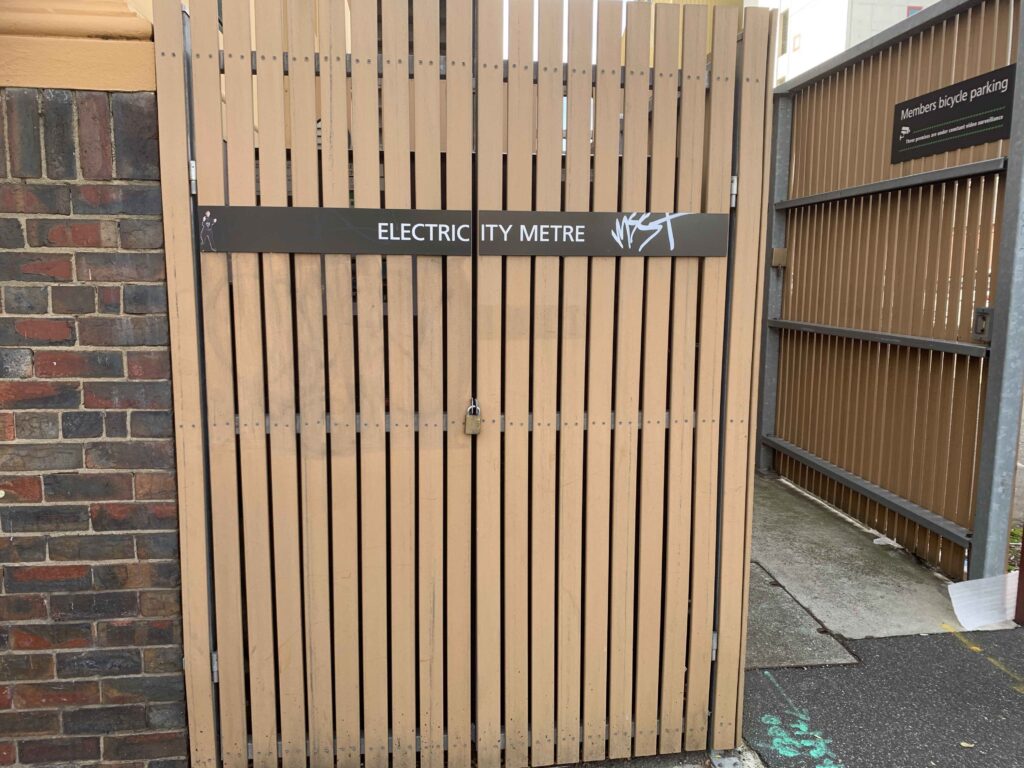
46 million errors?
Most of us have made mistakes that are trivial and soon forgotten as well as some that are painful and linger on. But some people’s mistakes are public and widespread, others are fixed in permanent features.
46 million times (x 3*)
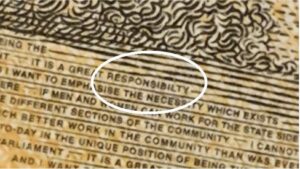 46 million of Australia’s new $50 notes where printed with a typo in 2019. The note features Edith Cowan, the first Australian woman to serve as a member of parliament and David Unaipon, an Aboriginal Australian preacher, inventor, and author.
46 million of Australia’s new $50 notes where printed with a typo in 2019. The note features Edith Cowan, the first Australian woman to serve as a member of parliament and David Unaipon, an Aboriginal Australian preacher, inventor, and author.
In the microscopic text, which is taken from Edith Cowan’s maiden speech to the WA Parliament in 1921, the word “responsibility” is missing the third “i” and says “responsibilty”.
The word appears three times* in the excerpt, all of which are misspelled on the note in the same manner. It was to be corrected in later printings.
Another error – permanent this time, not fixed in the next print run …
See further down the list of quirky bits ‘Oops. Having trouble finding Victoria? There’s a bit of history there.’
Fun earthworm fact
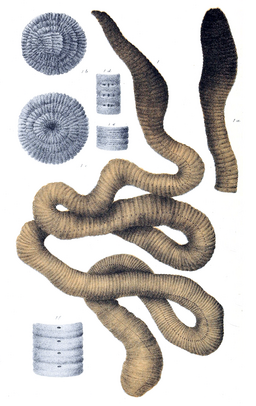
Gippsland Giant Earthworm
Fun worm fact – Gippsland, eastern and south eastern Victoria, has a giant worm that stretches out from 1 metre to 3 metres and can be heard gurgling underground!
Choosing better fonts
 What font do you use when you prepare materials – online or in print? Probably the default.
What font do you use when you prepare materials – online or in print? Probably the default.
Typically there are many fonts available beyond Arial, Calibri. Even the default fonts have changed over time. Times New Roman with the serifs (feet) seems less common now.
But they each have their own characteristics. Here are some of them.
‘i’ before ‘e’ rule mishaps
“I” before “E,” except when your foreign neighbour Keith receives eight counterfeit beige sleighs from weird feisty caffeinated weightlifters
A science teacher was a strong proponent of the i before e except after c rule until he looked at this job title. He had been a science or sceince teacher for nearly fifteen years.
He didn’t learn the second part of the rule. Who knew there was a second part?
I before E, except after C or when sounded as A, as in neighbor and weigh.
Really?
Did you know the second part of the rule?
Where do painted ladies cavort with red admirals, watched by greengrocers?
In the garden.

They might also be watched by a Southern Old Lady or a Dainty Swallowtail.

Is this anthropomorphism?
Winnie the Pooh and friends, or more recently Bluey, are examples of anthropomorphism (imbuing a nonhuman entity with human qualities).
Not sure if naming butteflies in this way counts as anthropomorphism. What is a more accurate word?
Need a Round Tuit?
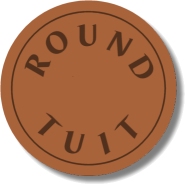 We can offer a Round Tuit.
We can offer a Round Tuit.
More powerful than Gollum’s Ring, even better than a list when supported by good intentions, they are provided here for those who are just on the edge of writing their proposal.
Oops. Having trouble finding Victoria? There’s a bit of history there.
Most of us have made mistakes that are trivial and soon forgotten as well as some that are painful and linger on. But some people’s mistakes are public and widespread, others are fixed in permanent features.
Long lasting mistakes – VIC SA border
In your mind’s eye, picture a map of Australia, specifically the Victorian -South Australian border.
Guess what – it’s not a straight line? There were some errors in the survey measurements and up on the Murray River you can see the glitch.
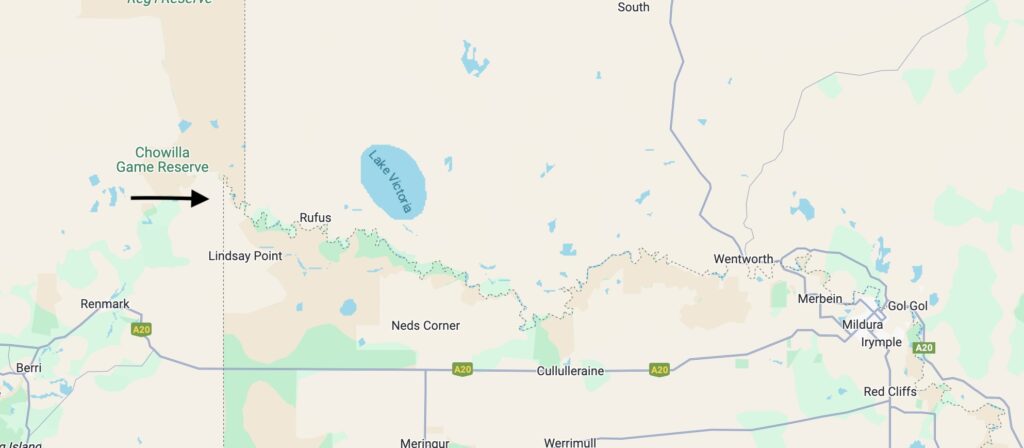
Pi Day or Daze
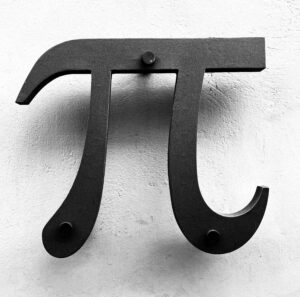 Pi Day March 14 (3/14 becomes 3.14)
Pi Day March 14 (3/14 becomes 3.14)
Or Pi Approximation* Day July 22 (22/7)
Depending on how you write your dates.
*Actually they’re all approximations as Pi is an irrational number, which means it can’t be written as a simple fraction
Lost money, lost language
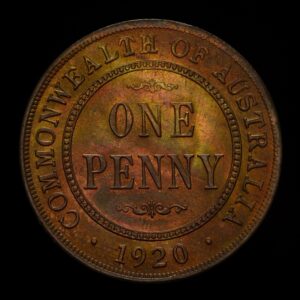 Before decimal currency was introduced we had names and also nicknames for many of the coins.
Before decimal currency was introduced we had names and also nicknames for many of the coins.
(Feel free to sing the jingle ‘Fourteenth of February 1966’ with Dollar Bill)
- Half-penny (pronounced ‘ha’penny’)
- Penny was just penny
- Two pennies (the price of a phone call) were ‘tuppence’
- Tray – threepence (pronounced ‘thrupence’)
- Zac – sixpence
- Deener or deenah – a shilling (twelve pennies)
- A shilling was also a bob
- Florin (rather fancy) – two shillings
- Quid – a pound (twenty shillings, 240 pennies)
- Fiver – five pounds
- Tenner – ten pounds
So an item might cost five pounds, twelve shillings and tuppence ha’penny.
A memory from long ago: Christmas Day dessert, plum pudding with a lucky thrupence to be found. Incredibly everyone seemed to end up with a thrupence. How did that happen?
(Corrections and additions welcome!)
And don’t forget to submit a proposal.
Melbourne - Eureka Rebels, Ned Kelly, Melbourne University and State Library
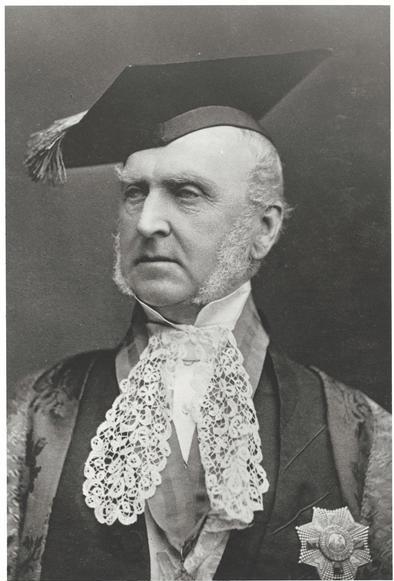 Sir Redmond Barry KCMG QC (7 June 1813 – 23 November 1880), was an Irish-born judge in the Australian colony of Victoria. A major figure in the early civic life of Melbourne, Barry was instrumental in founding several key institutions in the city, including the University of Melbourne and State Library Victoria, outside of which a statue of him stands. He is also well known for presiding over the trial of the Eureka rebels, as well as having sentenced the bushranger and outlaw Ned Kelly to death.
Sir Redmond Barry KCMG QC (7 June 1813 – 23 November 1880), was an Irish-born judge in the Australian colony of Victoria. A major figure in the early civic life of Melbourne, Barry was instrumental in founding several key institutions in the city, including the University of Melbourne and State Library Victoria, outside of which a statue of him stands. He is also well known for presiding over the trial of the Eureka rebels, as well as having sentenced the bushranger and outlaw Ned Kelly to death.
Early in his Melbourne career Barry served as the defence lawyer for Tunnerminnerwait and Maulboyheenner, two Indigenous rebels on trial for murder. Barry questioned the legal basis of British authority over Aborigines who were not citizens and claimed that the evidence was dubious and circumstantial. Despite his best efforts, the two men were found guilty and subsequently hanged on 20 January 1842, becoming the first people in Victoria to be legally executed.
In a curious twist, Ned Kelly’s armour is displayed in the State Library, not far from the site of the Melbourne Gaol where Kelly was hung on 11 November 1880.
More in Australian Dictionary of Biography
A contested view of Melbourne University’s history
After the above information was linked in a conference promotional email (Subject line: ‘ACAL 2025 conf and Ned Kelly’, January 23 2025) a reader contacted us (thank you) and drew our attention to an Indigenous-led book challenging the presumption that universities make only ‘good’ contributions to the community – confronting the University of Melbourne’s disturbing history.
There’s also an exhibition at The Ian Potter Museum of Art, part of Melbourne University, 65,000 Years: A Short History of Australian Art listed in the conference Things to do page.
Hook turns
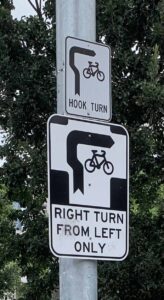 Melbourne is one of the few places in the world that has hook turns as a traffic manoeuvre.
Melbourne is one of the few places in the world that has hook turns as a traffic manoeuvre.
A hook turn is a manoeuvre where a vehicle turns right from the left lane of an intersection.
Trams are part of the reason while some cynics suggest it is to deter motorists from driving into the city centre.
Cyclists often use a hook turn as a safety precaution. Some intersections now oblige them to do so (see pic).
Once upon a time there were just four hook turns in Melbourne, all concentrtated around one large block. Now there’s lots.
Spend a few minutes at an intersection and watch the joy. There are several such intersections near the conference venue!
See Transport Victoria for a precise description.


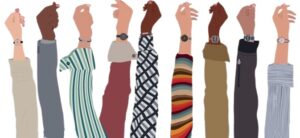 A big thank you to everyone – especially the presenters – who made the 2025 conference such a success!
A big thank you to everyone – especially the presenters – who made the 2025 conference such a success!